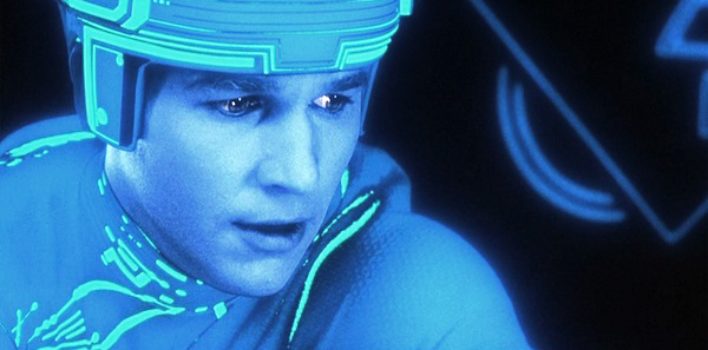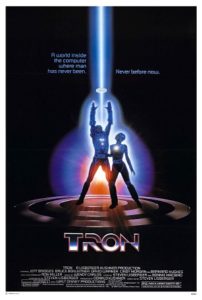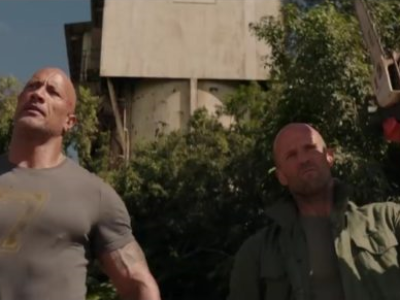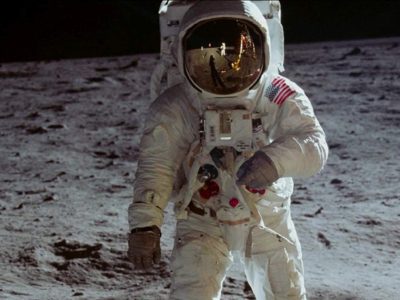The Legacy of TRON
In today’s world, it’s difficult for young people to imagine a world without a computer. They are integrated in almost every aspect of our lives – from communication to entertainment to shopping. It’s so ubiquitous that the computer has become a bit of a hindrance for some people.
In 1982, the computer was a mystery to most people. Very few knew how they worked, or how these machines were going to impact their lives. The closest most people got to a computer was playing a video game in an arcade. That year, a film was released that attempted to give this new frontier a fantastical dimension.
I liked TRON before it was cool. The film was not as financially successful as it should have been, thanks to a certain extra-terrestrial who dominated the box office in the summer of 1982. My friends often made fun of me for liking TRON, as the movie was the butt of many pop culture jokes in the 35 years since its release. It now has a healthy cult following – so much so that a sequel, TRON: Legacy, was released in 2010 (which was good, but not great).
 Though I knew it was fantasy, TRON fired my imagination to think that inside every computer was a civilization. Like the ancient scholars who dreamed up what lay beyond the edge of the world, TRON sought to make sense of the mystery of computers in the context of a world filled with motorcycles made of light, expansive vistas of data, and anthropomorphized programs living out their functions.
Though I knew it was fantasy, TRON fired my imagination to think that inside every computer was a civilization. Like the ancient scholars who dreamed up what lay beyond the edge of the world, TRON sought to make sense of the mystery of computers in the context of a world filled with motorcycles made of light, expansive vistas of data, and anthropomorphized programs living out their functions.
I loved the movie and everything about it. And as I have grown up and become more mature spiritually, I value TRON even more.
The story of TRON follows Kevin Flynn, a computer programmer who was unjustly fired from tech company ENCOM, courtesy of a jealous co-worker. While seeking the evidence to clear his name, he is beamed into the ENCOM computer system by the Master Control Program, a power-hungry AI bent on world domination. Inside the computer, Flynn is forced to participate in a series of video games, which are literal life-and-death in the computer world. With the help of the security program Tron, he will help free the system from the clutches of the MCP.
First of all, TRON is a visionary film in every sense of the word. It was the first mainstream motion picture to make extensive use of computer animation. In fact, when Pixar’s John Lasseter was still a young animator working at the Walt Disney Studio in the early 1980s, it was TRON that really opened his eyes to the possibilities of computer animation. It also predicted the coming digital revolution with interconnected computer systems.
 TRON is a beautiful movie made with care and artistry. It’s ironic that a film about computers was made in a predominantly analog way. Most of the backgrounds were painted, and conventional animation was done to compensate for the limitations of the computer graphics at the time. Futurist Syd Mead contributed some designs to the film, including the light-cycle. On top of that, each character’s lighted circuitry was hand-painted, frame by frame. It’s an amazing undertaking when one thinks about it.
TRON is a beautiful movie made with care and artistry. It’s ironic that a film about computers was made in a predominantly analog way. Most of the backgrounds were painted, and conventional animation was done to compensate for the limitations of the computer graphics at the time. Futurist Syd Mead contributed some designs to the film, including the light-cycle. On top of that, each character’s lighted circuitry was hand-painted, frame by frame. It’s an amazing undertaking when one thinks about it.
Ram: “Do you believe in the Users?”
Crom: “Sure I do. If I don’t have a User, then who wrote me?”
As I became more mature my faith, TRON began to hold a deeper meaning. This film was the first to really open my eyes to the spiritual meta-narratives that drive stories, and the first whose themes I wrote about extensively. It was like a side of my mind suddenly turned on. It was also during my dive into TRON that I first came across a lecture about the film from Pastor James Harleman – which carried me even further down this philosophical rabbit hole.
There is a definite spiritual side to the computer world of TRON – and it is a decidedly Christian one. Humans, called “Users,” are worshipped by the programs they created as gods – programs which are made in their Users’ images. Tron himself is a true believer in the Users, and pays tribute to them in everything he does.
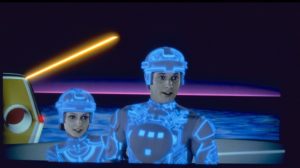 The Christ figure is Flynn – a User who is beamed into the computer world and takes the form of a program with all its limitations. In the system, Flynn can do things other programs can’t, like bring programs back from the dead and create vehicles from nothing. He is the one who goes into the heart of the Master Control Program and seemingly sacrifices himself to free the system.
The Christ figure is Flynn – a User who is beamed into the computer world and takes the form of a program with all its limitations. In the system, Flynn can do things other programs can’t, like bring programs back from the dead and create vehicles from nothing. He is the one who goes into the heart of the Master Control Program and seemingly sacrifices himself to free the system.
There is no real indication that TRON‘s writer/director Steven Lisberger had any intention of including a Christ allegory in his film. It is a story device people respond to for a reason. Deep inside, we all want a savior to heal us, free us, and rescue us. There is something in each of us that longs for that.
TRON is a classic of the sci-fi genre, and the film as a whole seems to get better with age . It’s a time capsule into the period right before the digital revolution, when the computer was still a mystery to the average person – an uncharted world full of possibilities. This fantasy interpretation of something decidedly mechanical opened my imagination when I was a kid, and I still find the idea captivating.
This film holds a special place in my moviegoing heart, as it opened my eyes to the intersection of my faith and film – a place in which I could make a positive impact in the culture for the Kingdom of God.
 The closing shot of TRON is a time-lapse film of a cityscape, which makes the cars streak across the freeways like the light-cycles of the Game Grid. It’s a not-so-subtle way of saying that the two worlds have definite parallels. There is a natural order and beauty to the real world, as there is in the computer world. This visual statement begs the very profound question: if Users wrote the programs, Who “wrote” us?
The closing shot of TRON is a time-lapse film of a cityscape, which makes the cars streak across the freeways like the light-cycles of the Game Grid. It’s a not-so-subtle way of saying that the two worlds have definite parallels. There is a natural order and beauty to the real world, as there is in the computer world. This visual statement begs the very profound question: if Users wrote the programs, Who “wrote” us?
Fortunately, the is indeed a “Master User” who created us, who did come to this world as one of His creations, and who sacrificed Himself for our sake.
END OF LINE.


